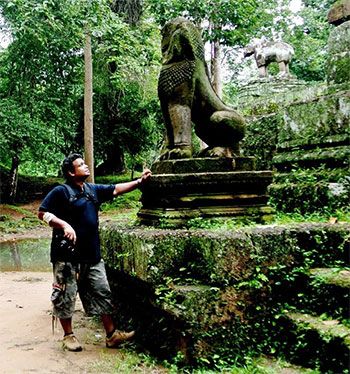
'There are hundreds of items from Madhya Pradesh, Andhra, Rajasthan, Gujarat in Subhash Kapoor's loot. The Tamil Nadu Idol Wing wants to just prosecute Kapoor for three cases and close it. To me that's myopic.'
Vijay Kumar -- who is responsible for identifying countless Indian treasures stolen and smuggled overseas -- discusses the strange case of Subhash Kapoor, the New York art dealer allegedly responsible for selling scores of stolen Indian artefacts, with Vaihayasi Pande Daniel/Rediff.com
EARLIER IN THE SERIES
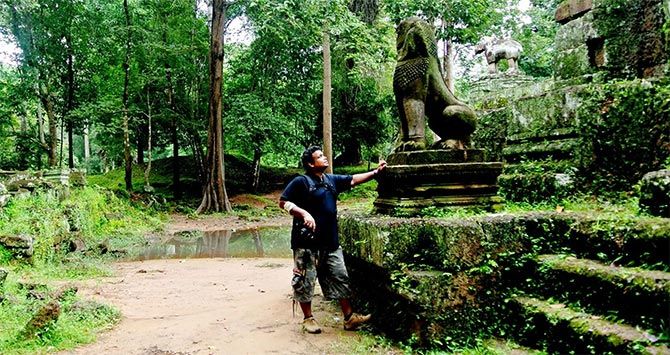
Vijay Kumar loves the concept of ghar wapsi.
VJ, as he calls himself, works in Singapore and blogs dedicatedly for a cause, ambitiously looking for ghar wapsi for hundreds of thousands.
Not people.
But gods.
There are thousands of Indian deities who no longer live in India, stolen and taken away from our land.
Vijay Kumar is trying to bring these treasures back. He spends his off time, researching the illicit artifacts trade, tracking thefts of gods from our temples and the thievery of priceless treasures from our historical sites.
He subsequently hunts down these murtis and pieces, carefully following their secret trajectory, quick to spot them when they finally turn up in a museum, gallery or in someone's private collection, beyond India's shores.
Kumar then highlights the theft first on his blog -- www.poetryinstone.in (external link) that celebrates South Asian temple sculpture -- citing records and photographic evidence and subsequently in articles in the media and raises the alarm to the authorities concerned.
He and his blogger band, given their extensive, impressive, knowledge and hard work, have been instrumental in getting some of these treaures back to India.
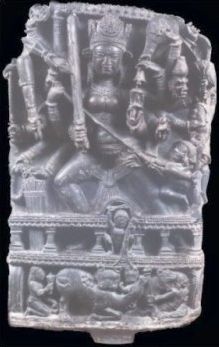
The latest ghar wapsi occurred when Germany's ministry of science, research and arts returned the Linden State Museum for Ethnology's statue of Durga Mahishasuramardini, stolen in 1991 from a temple in Tengpona, Jammu, to Indian Ambassador Vijay Gokhale.
Vijay Kumar laments that for every successful, but rare, ghar wapsi, there are thousands of pieces out there in the cold, waiting to come home to India.
Apart from sorrow for the treasures India has lost, possibly forever, Kumar is angry that most perpetrators of these thefts have either not been caught or will not be adequately punished.
Equally worrying for Kumar is that Subhash Kapoor, the New York-based kingpin of the illegal Indian antiquities trade, allegedly responsible for millions and millions of dollars worth of robberies and one of the very few to be caught, may walk free in another year or so.
Subhash Kapoor's warehouses and storage bays, in Manhattan and Queens, New York, yielded an inventory of 2,622 items, probably all of them stolen. That is not all of his stock perhaps -- other pieces may have been stashed away hidden from law enforcement. What was recovered was just the pieces he had in his possession in 2011.
In his 30 odd years as an art dealer and owner of the Art of the Past, Manhattan (started in 1976), thousands more items from India would have passed through Kapoor's hands, headed for museums and private collections, of which he would have had records, if not destroyed, and certainly a recollection.
If you examine the list of the 2,622 items in Kapoor's stock (external link) that were seized, easily 70 per cent of them have their origin in India.
Kapoor, currently imprisoned in Chennai, has only been charged with the theft of 18 of these 2,622 items, the ancient Chola bronzes.
This leads to a number of perplexing questions that Kumar pertinently raises:
- Why has the Indian government and police not charged Kapoor for the other stolen items yet?
- Why has what he allegedly obtained not been, it seems, catalogued and air-tight cases drawn up against the dealer for the entire inventory (which could be thousands of pieces) that keeps him in prison?
- While Kapoor is lodged in the Puzhal Central Jail, in the custody of the Tamil Nadu police, awaiting trial, is he being interrogated about the innumerable other idol thefts he has allegdly been involved in? No details have emerged till date and he has been in prison for three years.
- Why has India not asked a few critical questions of the Art Loss Register? This commercially-run, London-based, international database, which stores information about lost/stolen art, antiques and collectables, apparently granted certificates to most of the Kapoor items.

Several accomplices helped Kapoor ship the 18 Chola bronzes out of Tamil Nadu; some in Tamil Nadu, some in Mumbai, some in Hong Kong, some in Britain.
There would be others who helped him ship earlier treasures, including the Indian items among the artefacts seized from his warehouse in New York by the police.
Many of these individuals have not been brought to justice. Nor apparently have extradition requests been made.
Sanjeevi Asokan, an alleged accomplice in the theft of the Chola bronzes, is out on bail. Kapoor's sister, whose culpability in holding his stolen treasures is presently being investigated by America's Homeland Security Investigations, is not being sought by Indian authorities (there is no information to show this).
If the charges against Kapoor are not escalated -- given that he has already spent three years in prison -- when his trial comes up, he could well be free soon, having already served likely most of his sentence.
Most crucial, Kapoor is just one among countless individuals who have been illegally shipping antiquities out of India for decades. There are other dealers, operating with the same impunity as Kapoor within and beyond India, and probably using some of the same networks.
The Archeological Survey of India lost its case against a Jaipur-based dealer in antiquities in the Rajasthan high court in January 2014. There has been no visible move to file an appeal in this case in the Supreme Court.
What are we, as a country, doing about this brazen robbery of our history?
Vijay Kumar, who has admirable knowledge of this subject, in an interview to Rediff.com offers fascinating details of how these heirlooms disappear and how he works, miles away from India, helping restore this inheritance to India.
The first of a two-part interview:
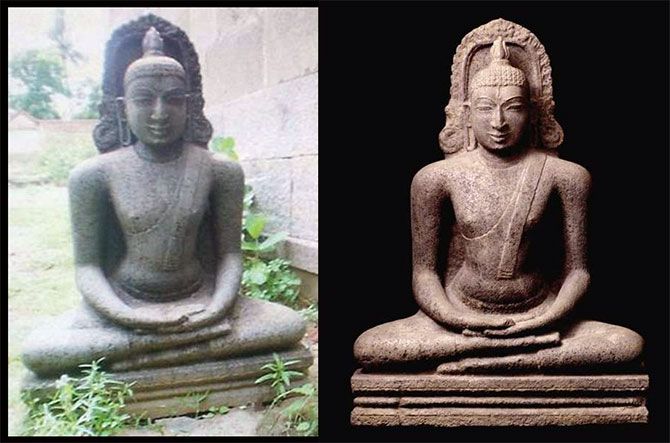
I understand that you, along with other archaeological experts/enthusiasts, were instrumental in identifying, in museums across the world, many of the artefacts that Subhash Kapoor and his contacts had allegedly smuggled out of India. And putting the heat on museums to return them?
I am not sure which expert you are talking of? As far as I know no expert or scholar helped in Tamil Nadu. In fact, except for Dr Kirit Mankodi, there is no scholar, expert who is even talking about idol theft.
SK (Subhash Kapoor) should have been caught in 2007 itself, when a Mumbai shipment was seized. It was not investigated properly.
But he got away probably at least three times.
Kapoor was almost caught again in 2009 when he was finally linked to various temple thefts in South India, mainly because the Kerala police caught two thieves for another crime, at a routine police vehicle check point and their interrogation exposed the role of Sanjeevi Asokan, who was (alleged to be) a known idol smuggler dealer (who apparently often staked out dilapidated temples across Tamil Nadu).
Then the trail led to Kapoor. For some reason the case didn't reach America (where the goods had gone) and and Kapoor was still jet setting around.
At the time the Tamil Nadu police had no idea of how he looked even. They are pretty low-tech even now. It takes them about nine months to get a letter of rogatory (a formal court request to a foreign court for some variety of judicial assistance) sent out.
You said he should have also been investigated for the theft of a particular South Indian Nataraja where the accomplices had already been caught. That lead was not followed up?
In this case, interestingly, two petty thieves stole an (ancient) bronze Nataraja from a temple -- no name of the temple yet -- in Ariyalur district, Tamil Nadu. They kept it in a safe house to find a buyer. Meantime, one of them was caught for a petty theft and got six months in jail.
The other thief ran short of money. He tried to make a quick buck by cutting off the left hand of the Nataraja and selling it for metal. He thought it had gold content, and that maybe he could melt it. These guys don't realise that the actual gold content in this kind of metal sculpture is minuscule; more like a token addition of a few milligrams.
When the jailed one was released, he realised the stupidity of the other thief. Both of them got into a drunken fight. Both were caught in 2009 and spilled the beans about having stolen the Nataraja and how it was sold to Chennai idol smuggling gangs; but the details are patchy.
The story gets more interesting. Before the cops could reach the bronze, it was -- according to information we gathered -- handled via a reputed dealer and shipped out to a UK-based restorer and the hand was repaired/reconstructed.
The Nataraja, with the reconstructed hand, was subsequently seen in Art of Past catalogues.
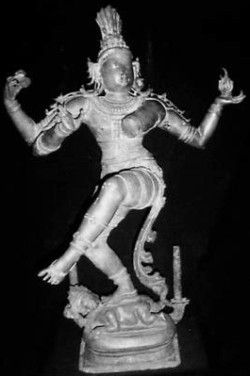
When the pressure to nab Kapoor was high, the bronze made a sudden return to India in 2011 -- a month prior to Kapoor's arrest, the Tamil Nadu Idol Wing claimed a dealer had voluntarily returned it!
To me this is plain ridiculous. What is interesting is that we have both before and after photos -- photos of the Nataraja missing his hand and he was shipped to the restorer and his hand was recreated and photos of him, repaired in SK's catalogues.
A lower court in Tamil Nadu set aside his warrant after the Interpol red corner notice was issued. Thankfully, the Chennai high court intervened and set aside the order. Finally, it took the role of a Singapore lady (Kapoor's ex half-Tamil, half-Chinese girlfriend Paramaspry Punusamy) to nab Kapoor in 2011.
But he would have been caught by America's Homeland Security at some point pretty soon. They had (planted) a mike on his office manager since 2009. One of the reasons why he is behind bars today is because of work done by America's Homeland Security.
My biggest issue with the investigation is once they got Kapoor behind bars, they did not go after the entire network. Sanjeevi Asokan is out on bail. No charges have been levelled against the Hong Kong company, another lady there, who received the bronzes, and then shipped them to the restorer in London, who was also not charged!
They are named in the FIR (external link).
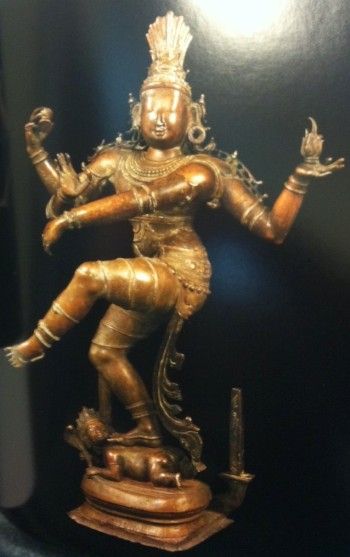
They are not keen to go after the customs people, shipping people who are involved to get to the bottom of this trade. Kapoor shipped from Chennai, Kolkata, Mumbai, Tuticorin etc. No one has gone after the chain.
Further the Tamil Nadu Idol Wing is not keen to look at the pan-India nature of this loot, despite us giving all the evidence in the case of the Barhut Stupa, the Kari Talai loot from ASI site museums.
Tamil Nadu is not the biggest loot -- there are hundreds of items from Madhya Pradesh, Andhra, Rajasthan, Gujarat in the Kapoor loot. The Tamil Nadu Idol Wing wants to just prosecute (Kapoor) for three air-tight cases and close it. To me that's myopic.
Despite having Kapoor in custody, we are left to search for the proverbial needle in the haystack, for what has been sold to museums the world over, plus search for clues to origin sites.
The saddest part is the case of yet another missing Nataraja -- the Suthamalli Nataraja (stolen from a Shiva temple in Suthamalli, 30 km west of Gangaikondacholapuram, Tamil Nadu).
When Kapoor was detained in Germany he apparently smuggled out a hand-written note to his office. His note, it is said, instructed them to hide the two dancers and consorts in his cabinet.
Thus, we have two Natarajas and two Parvathy bronzes that have been hidden in the heart of New York and we might never see them again.










